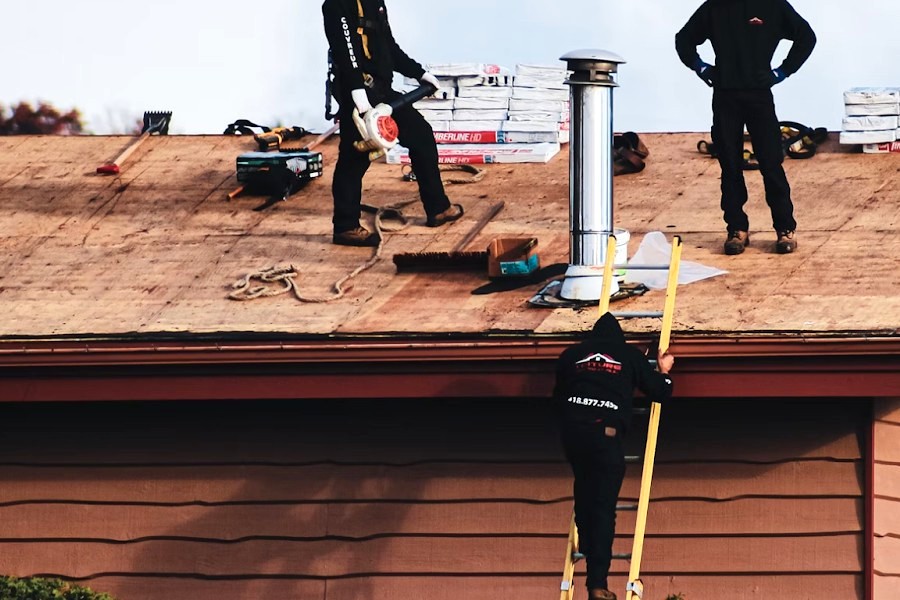
A major storm can wreak havoc on your home, leaving you feeling overwhelmed by the damage.
Acting swiftly and methodically is essential to restore your house to its pre-storm condition.
Here’s a practical guide to help you navigate through the process of fixing your home after a major storm.
Spotting Signs
Look for obvious indicators like missing shingles, broken windows, and damaged siding. Pay attention to water stains on ceilings and walls, which can signal leaks. Check for structural issues such as cracks in the foundation or walls, which might have been exacerbated by the storm. When you spot signs of hail damage on windows, such as cracks, chips, or shattered glass, it’s crucial to address the issue immediately to prevent further complications. Don’t overlook subtle signs like dampness or musty odors in basements and attics, as these can indicate hidden water damage or mold growth.
Ensure Safety First
Before starting any repair work, ensure that your home is safe to enter. Turn off the main power supply to avoid electrical hazards, especially if there’s water damage. Check for gas leaks, and if you detect any unusual smells, contact your gas company immediately. Wear protective gear such as gloves and sturdy boots to protect yourself from debris and sharp objects.
- Inspect Structural Integrity: Begin by assessing the structural integrity of your home. Look for signs of significant damage such as cracks in walls, sagging ceilings, or leaning walls. These could indicate compromised structural stability and should be addressed by professionals immediately to prevent collapse or further damage during subsequent storms.
- Address Electrical Hazards: Electrical hazards are a major concern after a storm, especially if there is water intrusion. Avoid touching electrical appliances or outlets if they are wet or submerged. Turn off the main power supply to your home if you suspect water has reached any electrical systems. Contact a licensed electrician to inspect and repair any damage to ensure your home is safe from electrical fires or shocks.
- Check for Gas Leaks: If your home uses natural gas, be vigilant for gas leaks after a storm. If you smell gas or suspect a leak, evacuate your home immediately and contact your gas company from a safe location. Avoid using any electronic devices, lighting matches, or turning on/off any electrical switches as these can cause sparks and ignite gas fumes.
Temporary Repairs
To prevent further damage, make temporary repairs. Cover broken windows with plywood or heavy-duty plastic sheeting. Use tarps to cover roof damage, securing them tightly to prevent water from entering. If there are leaks, use buckets to catch dripping water and move furniture and valuables to a dry area. These temporary fixes will help mitigate additional damage until permanent repairs can be made.
Contact Your Insurance Company
Promptly inform your insurance company about the damage. Provide them with the documentation you gathered during your initial inspection. An adjuster will likely be sent to assess the damage firsthand. Keep records of all communications and expenses related to the storm damage, as these will support your claim and ensure you receive appropriate compensation.
- Document Everything in Detail: Make sure you have a detailed record of all damages, including photos and videos. Documenting everything helps the insurance adjuster understand the extent of the damage and supports your claim. Keep receipts for any temporary repairs or emergency expenses, as these can be reimbursed or factored into your claim.
- Review Your Policy Thoroughly: Before speaking with your insurance company, review your policy to understand what is covered. Check for any exclusions or limitations that may affect your claim. Knowing your policy details will help you ask the right questions and ensure you don’t miss out on any coverage benefits.
- Stay Organized and Communicative: Keep all your communication with the insurance company organized. Document dates, names, and details of conversations with adjusters or customer service representatives. Promptly respond to any requests for additional information or documentation to keep the claims process moving smoothly.
Prevent Future Damage
After repairing your home, take steps to minimize future storm damage. Install storm shutters or impact-resistant windows. Reinforce your roof with hurricane straps and ensure gutters and downspouts are clear and secure. Trim trees and remove dead branches that could fall and cause damage. These preventive measures will fortify your home against future storms and potentially lower your insurance premiums.
Hire Reliable Contractors
Finding the right contractors is crucial for quality repairs. Get recommendations from friends, family, or online reviews. Verify their credentials and ensure they are licensed and insured. Get multiple quotes and be wary of extremely low bids, which could indicate subpar work or potential scams. Once you’ve selected a contractor, get a written contract detailing the scope of work, materials to be used, and a timeline for completion.
Fixing your house after a major storm requires a systematic approach to ensure thorough and effective repairs. By assessing the damage, ensuring safety, making temporary repairs, contacting your insurance company, hiring reliable contractors, and taking preventive measures, you can restore your home and protect it from future storms. Stay proactive and informed to safeguard your property and peace of mind.
Become a Harlem Insider!
By submitting this form, you are consenting to receive marketing emails from: . You can revoke your consent to receive emails at any time by using the SafeUnsubscribe® link, found at the bottom of every email. Emails are serviced by Constant Contact










